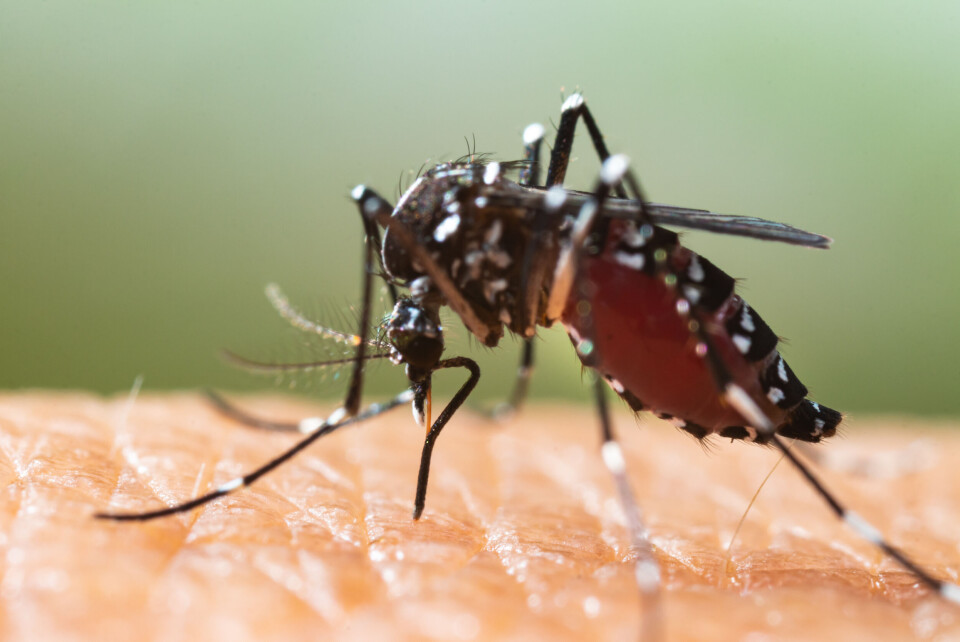-
American celebrity jeweller robbed of ‘more than €1m’ at French Riviera Airbnb
Jewellery and cash stolen from rental property where Chris Aire was staying
-
New 2026 civic tests in France: 50 example questions in French
Candidates must score 80% on tests to pass
-
France farmer protests: 100 tractors in Paris, roadblocks remain elsewhere
Farmers continue to blockade a number of routes ahead of Mercosur vote on Friday
Why CO2 tiger mosquito traps could soon be banned in France
Tiger mosquitoes are present in 57 departments and are capable of carrying diseases such as yellow fever and dengue

High-tech traps used to attract and kill tiger mosquitoes in France may soon be withdrawn from commercial circulation if they fail to obtain marketing authorisation.
(Asian) tiger mosquitoes, sometimes known as forest mosquitoes, are native to the tropical and subtropical areas of Southeast Asia and have white stripes across their legs and body – hence the name. Over the last few centuries, the mosquito has spread to almost all of the world’s continents.
They are dangerous in that they are a vector of transmission for several viral pathogens, including yellow fever, dengue and Chikungunya fever. They are also capable of hosting Zika virus and may be capable of spreading it among humans.
Last summer, a case of dengue fever was reported in the Var and health authorities established that the person in question had contracted the disease in France as they had not been travelling abroad.
Read more: Dengue fever case prompts insecticide spraying in Paris suburb
To fight against this insect, many individuals and local authorities have invested in traps which use CO2 to mimic human breath and lactic acid to imitate sweat. This attracts the female mosquitoes responsible for biting people towards the device, where they are killed.
These traps can cost up to €2,000 and the substances contained within also need replacing at regular intervals.
However, the traps are not a failsafe way of preventing tiger mosquito bites.
“We have a lot of evidence showing that these traps can be effective as a preventative measure, and can cut down mosquito populations as long as they are well maintained and there are enough of them,” Johanna Fite of the Agence nationale de sécurité sanitaire de l’alimentation, l’environnement et du travail (Anses) government agency told La Dépêche.
“But they do not constitute a miracle solution. The traps are more effective when used in conjunction with other means, notably the removal of breeding sites.”
Because of a lack of scientific evidence on the efficacy of the traps in limiting the spread of the illnesses tiger mosquitoes can carry, Ms Fite added that the traps should only be used as a “preventative measure, or if it is not possible to use insecticide, for example when the area in question is near a body of water or inaccessible.”
This could in turn affect the future commercialisation of the traps, which have been granted provisional permission ending this July.
“The CO2, lactic acid and other substances used to attract the female mosquitoes are biocidal,” Ms Fite said.
“The traps which use them must therefore conform with regulations on biocidal substances and benefit from marketing authorisation (called autorisation de mise sur le marché or AMM in France).”
Some manufacturers have submitted AMM applications, but as yet none have been granted approval.
After July, “traps which do not have AMM will no longer be allowed to be commercialised in France,” Ms Fite added. Individuals and organisations will then have only six months before the use of existing traps becomes illegal.
Emmanuel Lescot, a local councillor for the Camargue region, has said that his area has “become unlivable over the summer because of mosquitoes.
“The traps are really effective and residents are satisfied. Of course, we could live without the anti-mosquito devices but we would have to stay locked up inside the house.”
The commune of Hyères in the Var has already invested nearly €1.5million over three years in 396 traps.
Trap manufacturers were taken by surprise by the warning from Anses, with Pierre Bellagambi, director of leading producer Qista, saying: “Our [application] file was sent to the agency in February 2022 and accepted for evaluation.
“They have 90 days to reply by law. I don’t know anything about this July 2022 date.”
Another manufacturer questioned: “If CO2 is considered a biocidal substance, why aren’t human beings also viewed as such, seeing as they secrete it?”
There are also concerns that banning the traps could see a more widespread return to traditional pesticides, which cause harm to the environment.
When will the tiger mosquito season begin?
Tiger mosquitoes are generally present in southern and eastern France, having been spotted in 57 different departments.
Along the Mediterranean coastline their population is observed closely by the Entente interdépartementale pour la démoustication du littoral méditerranéen (EID Méditerranée).
This organisation states that the mosquitoes generally begin to appear in May. The mosquitoes generally bite around dawn and dusk.
Residents are advised to get rid of any standing water around their houses, and to cover water tanks, gutters and plant pots with mosquito nets, because it is in these spaces that the mosquitoes breed.
Related articles
Drones can control spread of tiger mosquitoes, French study finds
Traps set in trial attempting to control tiger mosquitoes in France
Mosquitoes in France: A scientist's advice for keeping them away
























